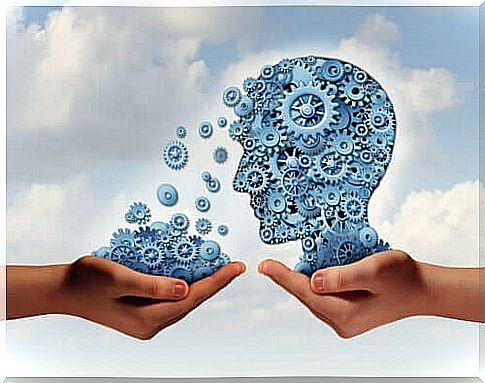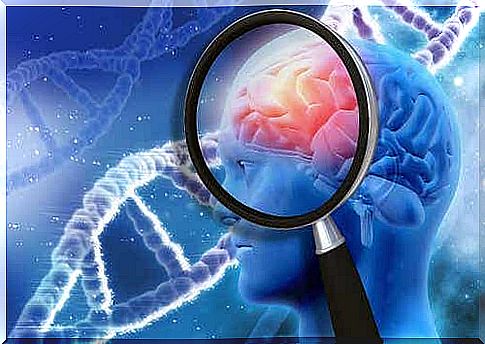The Utility Of Neuropsychological Rehabilitation

Currently, neuropsychological rehabilitation is in the spotlight for its utility in traumatic events involving the brain. We must emphasize that a rehabilitation process is of utmost importance for a person to be able to be autonomous. As a result, they will be better able to reintegrate into their community.
There are several things to consider when choosing a neuropsychological rehabilitation plan. Each of these things can influence the development of the therapy as well as its results. But what are these variables?

Injury variables related to neuropsychological rehabilitation
First of all, there are injury variables. They emphasize aspects directly related to a patient’s injuries. It mainly concerns the direct damage to the brain structure and its function.
Location
One of the things to consider is the location or cause of the brain damage. Craniocerebral trauma, stroke, brain tumors or infectious diseases affecting the brain are among the leading causes.
A stroke can have two main variants:
- Ischemic, which consists of the obstruction of one or more arteries of the brain. The main damage occurs in the white matter.
- Hemorrhagic, resulting in a ruptured artery. It causes bleeding and therefore has more influence on the gray matter.
There are also two types of craniocerebral trauma:
- The first is open head injury where the lesions can become more focal and affect specific areas of the brain.
- Second, internal head injury, where the lesions are usually more diffuse.
Identifying the origin and location of a lesion is important to know both the affected area and the parts that are still intact. This is the basis for developing the most appropriate strategies and activities needed for neuropsychological rehabilitation.
Intensity
In many cases, the severity of the lesions outweighs the importance of the consequences. One of the measures to determine their intensity is the duration of amnesia after an injury. In other words, the amount of time it takes a particular patient to remember that they’ve had brain damage and that they’re recovering.
Another way to measure the intensity of an injury is through the Glasgow Coma Scale at the time of hospitalization. This questionnaire measures the level of consciousness through an injured patient ‘s ocular, verbal and motor responses.
The ideal score is 15 points, which is the score of someone with no damage. People with scores of 3, 4 and 5 often have problems being independent in the future.
Time of evolution
The evolution period is the time it takes a patient to show improvement. In this case, you must take into account the time between the injury and the start of treatment.
The rapid onset of neuropsychological rehabilitation is thus relevant. If there is improvement in a short time, it means that there is only minor brain damage. However, when a person takes longer to recover, their injury is more serious.
Personal Variables Affecting Neuropsychological Rehabilitation
These variables are important to know what a patient was like before their injury. It helps in planning long-term neuropsychological rehabilitation goals. Physicians must consider a patient’s functional status prior to injury, along with that person’s individual characteristics.
Age is the first personal variable to be taken into account. The younger a person is, the faster he will recover. In other words, neuropsychological rehabilitation is faster in younger patients.
Another variable to keep in mind is cognitive reserve, as it acts as a neuroprotector. Researchers found that people with higher education have a greater number of neural connections. They thus enjoy more complete functional compensation. For example, the symptoms are less restrictive and neuropsychological rehabilitation is more effective in these patients.

Contextual Variables in Neuropsychological Rehabilitation
Contextual variables relate to a patient’s environment after brain damage. They also take into account the support people have during the neuropsychological rehabilitation process.
Family is the first factor. They can provide information about the patient’s development in different contexts. In addition, they can help with continuity of what a patient does during therapy and what to do at home.
Helping a patient’s family members when they promote independence and boost motivation. This facilitates the rehabilitation process when it translates into their daily activities. Also, the intervention of a patient’s family can be very important, as it can help to transfer what has been achieved in therapy into their daily lives.
The rehabilitation team is also a variable. You have to take into account both the environment in which we work and their professional behavior. A positive attitude from both the team and the patient will always improve the prognosis. In other words, the therapy will be more effective.
Neuropsychological rehabilitation: conclusion
Finally, it is important to note that the rehabilitation process must be carried out by a professional team. The various factors that influence the result also play a role during this period.
For the process to run smoothly, the patients, family and rehabilitation team must feel comfortable and satisfied with the intervention proposal. It helps to have an adequate environment, activities that fit the patient’s needs and a good adjustment to their daily life.









